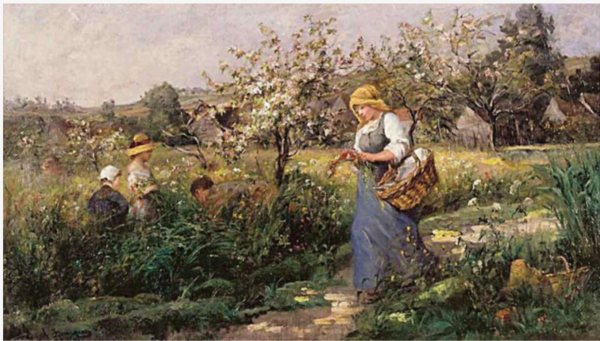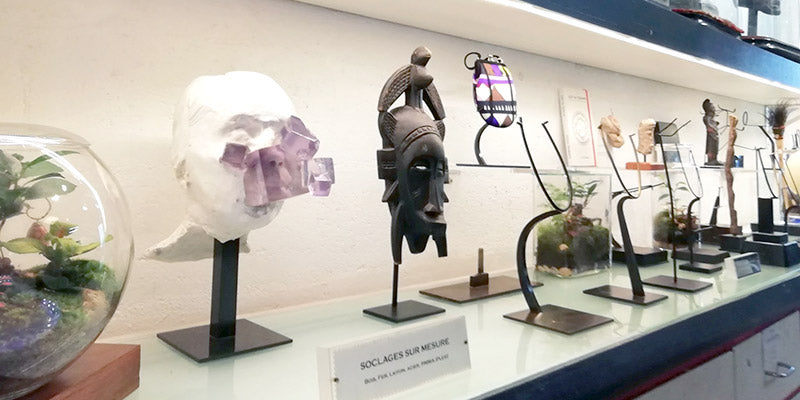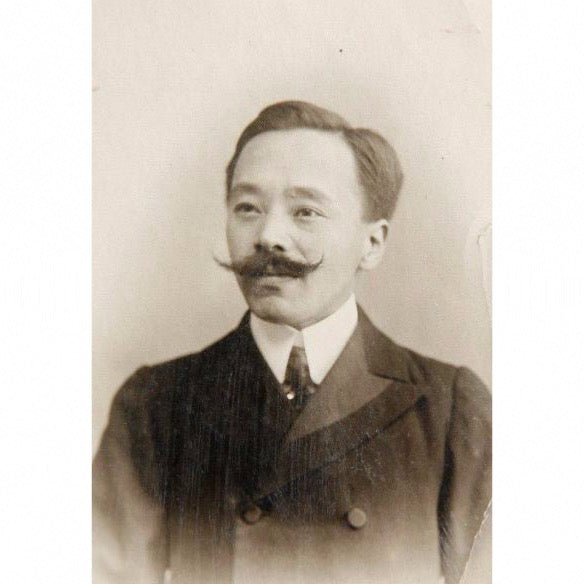
Kichizo INAGAKI, Rodin's Japanese baseman
The story of this plinth maker in
20th century art
Reading time: 5 min
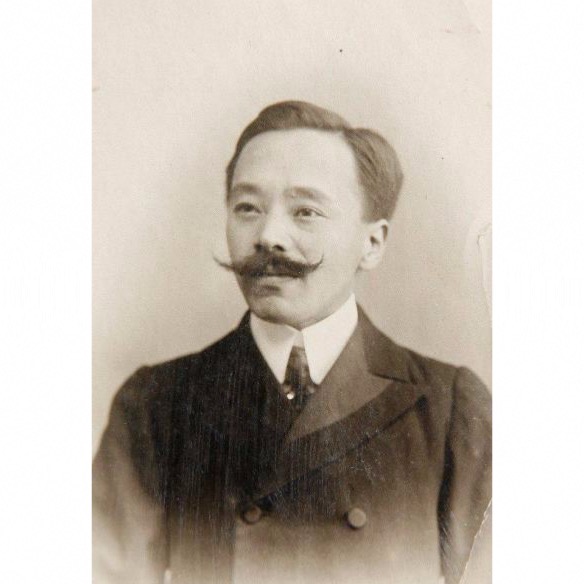
The art of plinth, like all arts, is embedded in a history. Our work would not be what it is today if it weren't for certain artists who revolutionized the art of plinth making. Among them is Kichizo Inagaki.
This Japanese artist reinvented the art of plinths by creating bases that completely merge with the work they support.
Kichizo Inagaki was born in Japan in 1876 in the city of Murakami. His father, a renowned craftsman at the imperial court, was talented in lacquer work and flower arrangement.
This Japanese artist reinvented the art of plinths by creating bases that completely merge with the work they support.
Kichizo Inagaki was born in Japan in 1876 in the city of Murakami. His father, a renowned craftsman at the imperial court, was talented in lacquer work and flower arrangement.
Inagaki excelled in traditional Japanese arts, after a few years in Tokyo, then in Hong Kong, he left for Paris in 1906.
During this period, Paris was celebrating Japanese art with the Japonism movement. Indeed, since the mid-19th century, the Parisian capital has been largely influenced by traditional Japanese arts, such as lacquerware and calligraphy.
Conversely, Japanese artists are attracted to Western arts and techniques.
Our Japanese plinth maker was quickly noticed for his woodworking talents.
Kichizo Inagaki creates bases for archaeological and primitive antique pieces. These various projects introduce him to artists such as Joseph Bummer, who quickly introduces him to Auguste Rodin.
Kichizo Inagaki has built a solid reputation as a plinth cabinetmaker. His work is characterized by a perfect mastery of woodworking. In addition, his work is recognizable thanks to his unique wood finishes, which reveal a light colored grain in white, black, red, green, or silver.
Kichizo Inagaki has built a solid reputation as a plinth cabinetmaker. His work is characterized by a perfect mastery of woodworking. In addition, his work is recognizable thanks to his unique wood finishes, which reveal a light colored grain in white, black, red, green, or silver.
Our plinth carver works extensively with another of his colleagues, Seizo Sugawara. This latter, also a wood carver, began working with Irish interior designer Eilleen Grey. Together, they created some truly remarkable wooden furniture.
Seizo Sugawara continued to create his own pieces and called upon Inagaki when he needed a wooden base made.
Together, they witness an artistic Paris in full swing.
So-called Negro art is at its peak and both artists, notably Seiko, integrate this influence into their work.
Inspiration from the plinth layer
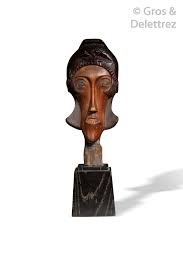
Seiko Sugawara, (1884-1932), untitled, sculpture in lacquered pine, approx. 1919-1922, unsigned base by Kichizo Inagaki.
It is in woodworking that Kichizo Inagaki's art stands out, particularly in patinas.
Indeed, in addition to the shape of the base characterized by slightly flared angles, Inagaki's patinas reveal the grain of the wood. This effect is intended to lighten the base as much as possible.
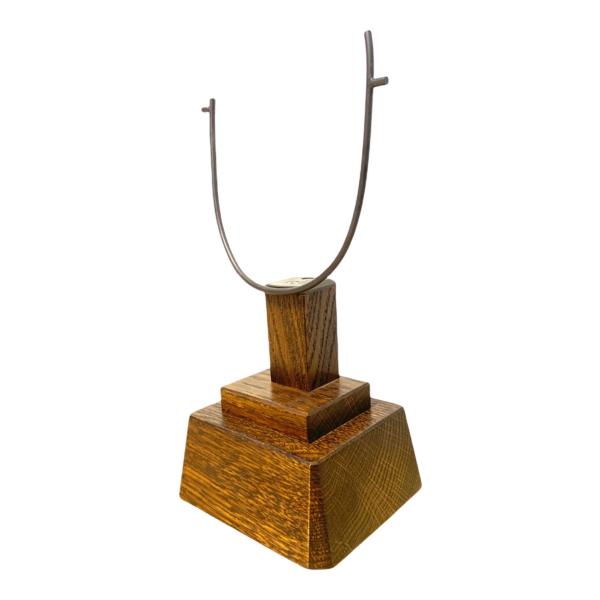
Contemporary custom-made base. All of Inagaki's hallmarks are respected, with slightly flared corners and exposed wood grain.
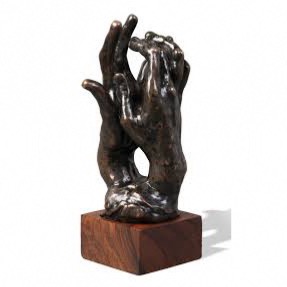
Bronze sculpture, Rodin, Kishizo Inagaki base
Customize your custom base,
from material to paint.
Like these two Japanese artists, we offer to work on your custom bases like a true work of art.
When we talk about a custom-made base, this is not an empty word.
Indeed, when you choose this option for making a base for one of your works of art, you must choose several things.
When we talk about a custom-made base, this is not an empty word.
Indeed, when you choose this option for making a base for one of your works of art, you must choose several things.
First, the choice of material, steel, wood, brass for the creation of the base itself.
Second, the choice of the position of the hooks.
Thirdly, the final choice of patina.
Patina is the color of the base. Patina, varnish, epoxy color. The choice is yours.
It is in the choice of these three parts, in the part taken by the plinth maker, that his style emerges.
Some plinth makers prefer to work with brass with curves and patinas, others prefer steel and black paints.
In any case, when you choose a material and its patina in our workshops, we respect your wishes to the letter.
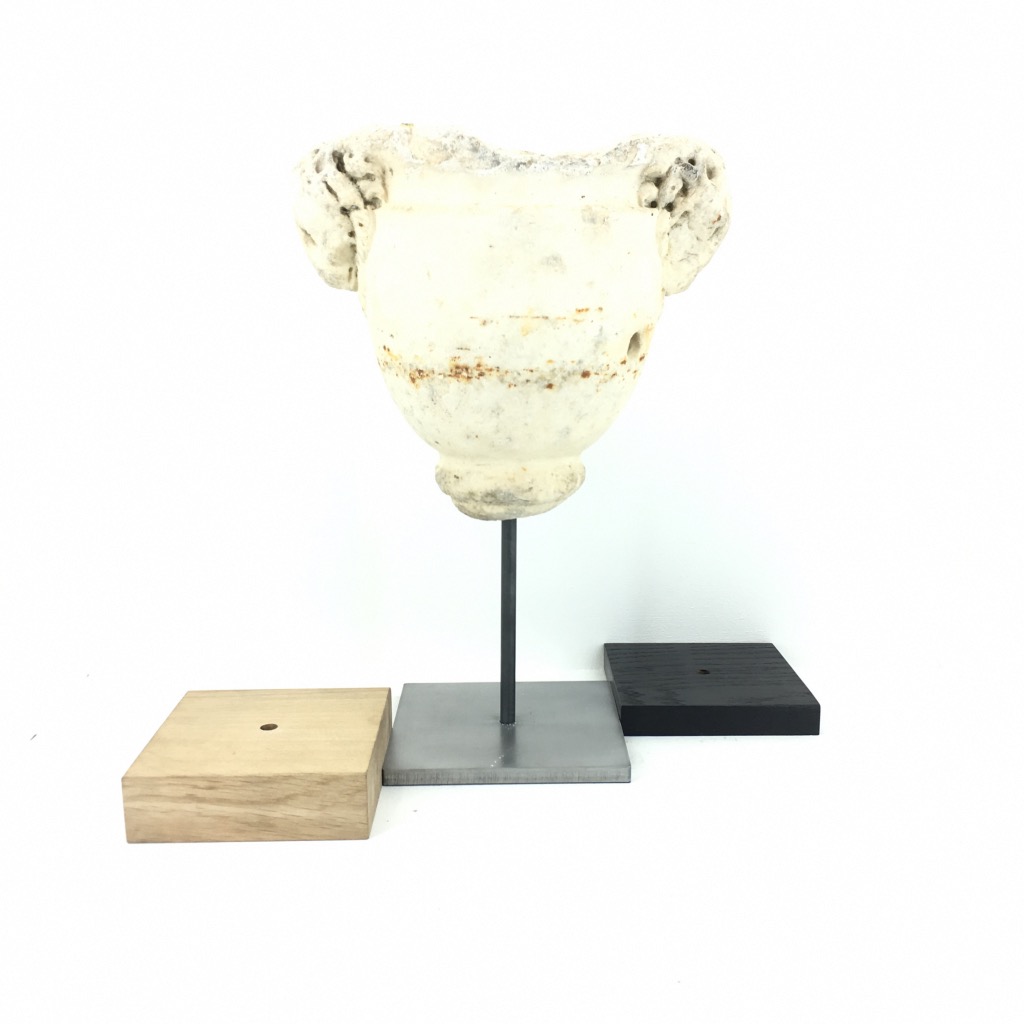
Discover our other custom bases
Antique amphora with three base options, wood and steel.
It's not uncommon for us to offer our customers several choices of bases. The choice is theirs.
Next.
Other suggestions for custom bases for a sculpture.
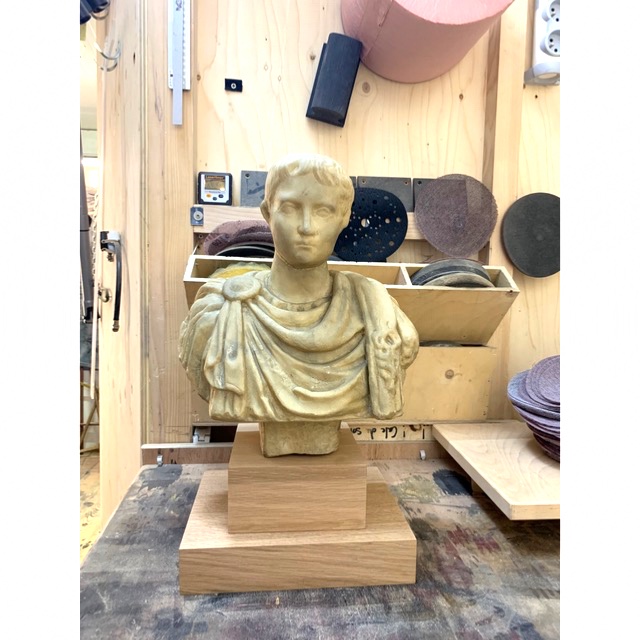
Proposal 1: Double wooden base for an antique sculpture.
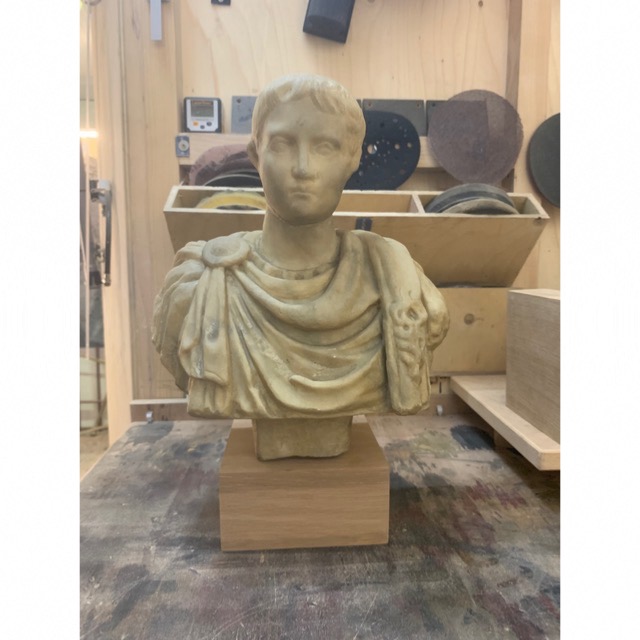
Proposal 2: the same sculpture but this time on a simple base made of raw wood
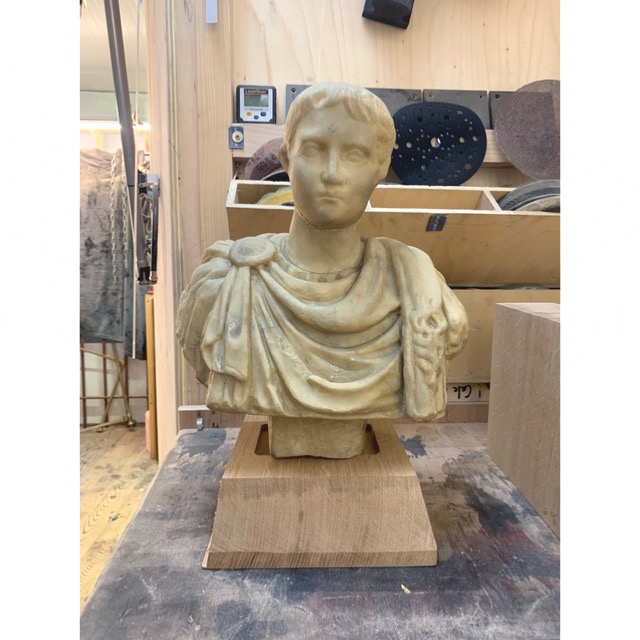
Proposal 3: Wooden base with inclined angles and space to embed the sculpture inside.
All these proposals were made for the Alexandre Piatti gallery, a gallery specializing in the Haute Epoque.
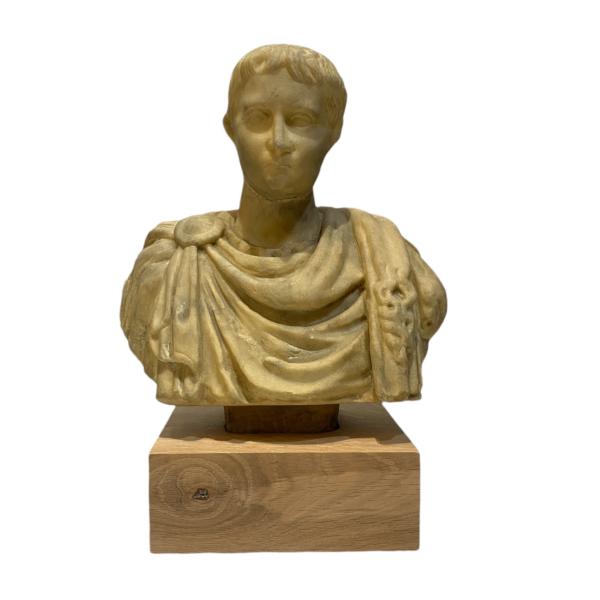
Final choice of base for the ancient sculpture.
How to choose your custom base like
Kichizo Inagaki?
The choice of material is made according to the object to be exhibited, its fragility, the rendering that one wants to give, simple, airy, modern, classic appearance.
Because each material has its own aesthetic properties.
Wood, for example, truly fits into the tradition of custom-made bases for art objects. Originally, bases were made of wood and then most often covered with a dark varnish.
In our workshop, we are working to improve our creation of new varnish colors in order to be able to offer you an ever-expanding range.
Regarding colors, if you want to cover your wooden base with paint, nothing could be simpler. Classic paint or spray paint are perfect for the job. Using wood gives a classic aesthetic if the base is covered with a patina, but if it is left raw with a simple clear varnish, it gives off a very modern design.
Because each material has its own aesthetic properties.
Wood, for example, truly fits into the tradition of custom-made bases for art objects. Originally, bases were made of wood and then most often covered with a dark varnish.
In our workshop, we are working to improve our creation of new varnish colors in order to be able to offer you an ever-expanding range.
Regarding colors, if you want to cover your wooden base with paint, nothing could be simpler. Classic paint or spray paint are perfect for the job. Using wood gives a classic aesthetic if the base is covered with a patina, but if it is left raw with a simple clear varnish, it gives off a very modern design.
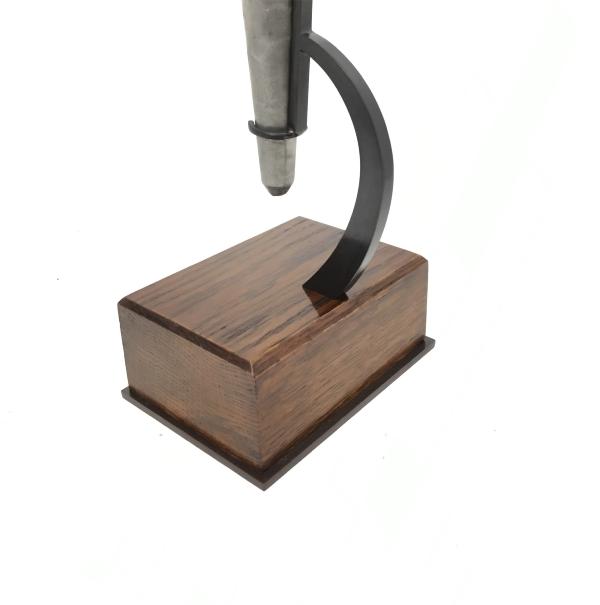
Custom-made wooden base with curved brass rod. Inspired by Kichizo Inagaki with exposed wood grain.
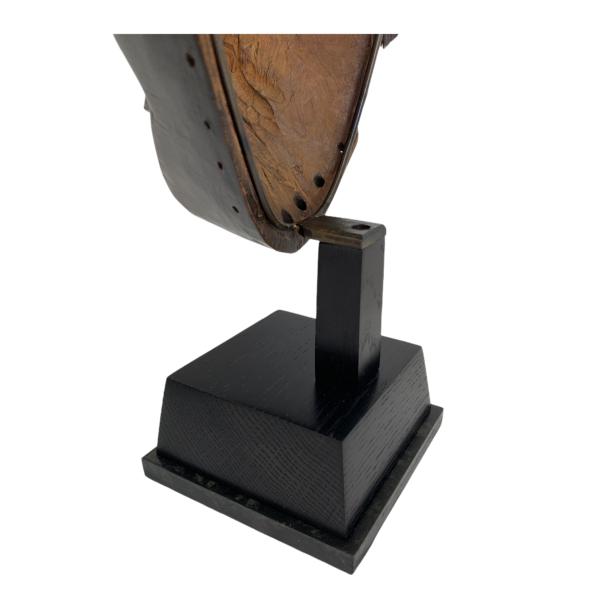
Wooden base with patinated steel base inspired by Kichizo Inagaki with its slanted angles
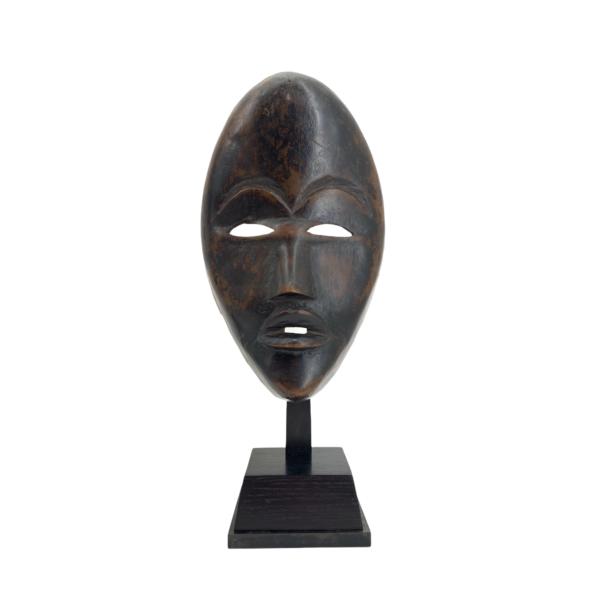
Same custom base seen from the front.
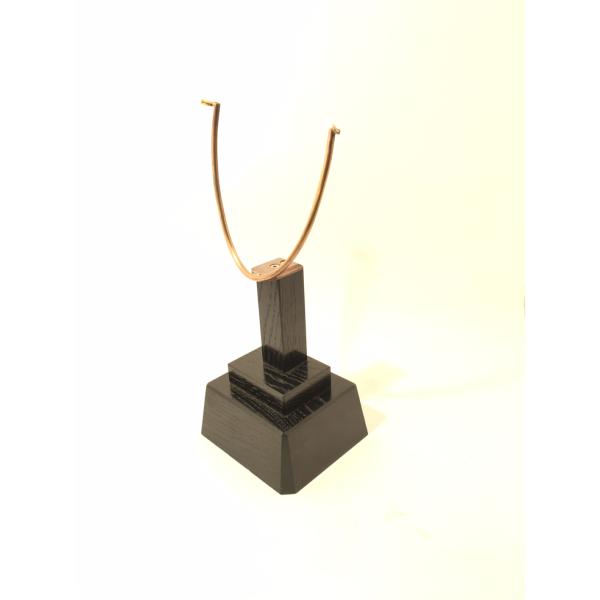
Our work as plinth makers is often inspired by the work of other artists.
Our workshops also have their own specificities.
Some work more readily with brass while others specialize in steel and more colossal structures.
This diversity allows us to offer you presentation solutions for all your objects, from the smallest to the largest.
Our workshops also have their own specificities.
Some work more readily with brass while others specialize in steel and more colossal structures.
This diversity allows us to offer you presentation solutions for all your objects, from the smallest to the largest.
Let's make an appointment to discuss together a base that meets your needs.


